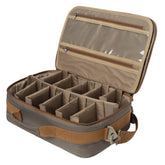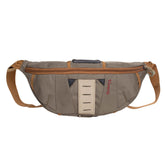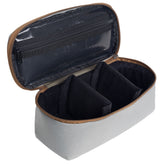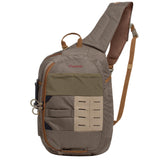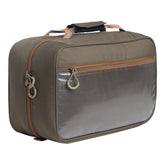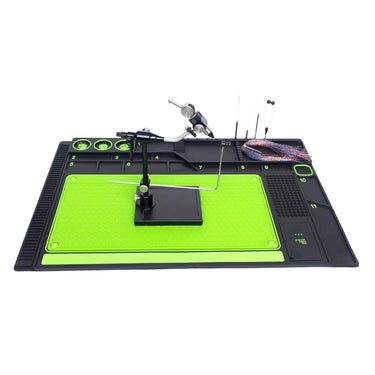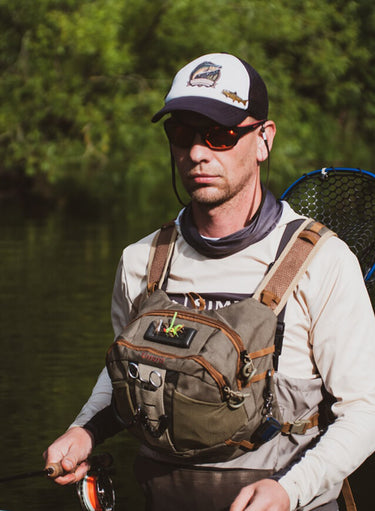Kayak Fishing Sling Pack: Choosing Between Wading Packs and Backpacks for Optimal Angling Experience
When it comes to fishing gear, the right pack can make all the difference in my experience on the water. Choosing between a kayak fishing sling pack and a wading fishing sling pack can elevate my fishing trip by keeping my essentials organized and easily accessible. Understanding the nuances of each type helps me select the best option for my fishing style.

I frequently get asked about the comparisons between backpacks and sling packs for fishing. While both offer unique advantages, the convenience of a sling pack often allows me to move with ease, particularly in tight spots or when wading through streams. The specific needs of my fishing environment will ultimately guide my choice.
For those interested in upgrading their fishing experience, I'm excited to share insights on various fishing sling packs available for sale. With a range of options, it's important to evaluate features that align with my fishing needs, ensuring that I stay both agile and prepared on the water.
Types of Fishing Sling Packs

Fishing sling packs come in various designs tailored for specific fishing styles and environments. Understanding the types available helps me select the right pack for my needs. Below are key types of fishing sling packs.
Kayak Fishing Sling Pack
For kayak fishing, a sling pack should be lightweight and attach securely to my kayak. These packs often feature water-resistant materials such as PVC and nylon, ensuring that my gear stays dry even if the pack accidentally gets splashed.
Adjustable straps allow for a custom fit, while padded shoulder straps enhance comfort during long paddles. I appreciate reinforced stitching for durability, especially when stowing heavier gear like tackle boxes or extra layers. Waterproof zippers and sealed seams are essential for protecting my fishing essentials, including fly lures and other gear.
Wading Fishing Sling Pack
Wading fishing sling packs are designed for anglers who move through water while fishing. The construction often includes water-resistant fabrics and quick-drying materials to withstand wet environments.
These packs tend to feature multiple compartments for organizing tackle, tools, and other accessories efficiently. Adjustable straps help me secure the pack snugly while wading, and the lightweight design minimizes bulk. Padded shoulder straps ensure comfort during longer sessions in the water, allowing me to focus on fishing without discomfort.
Fly Fishing Sling Pack
When fly fishing, I need a pack tailored to my specific equipment. Fly fishing sling packs typically include specialized compartments for storing fly lures and other delicate gear.
The lightweight and durable design is a must, as it allows for easy movement without feeling cumbersome. I rely on waterproof zippers to keep my flies dry and organized. Many of these packs come with additional features such as tool holders and attachment points for fishing nets, making it easier to access all necessary items while on the water.
Comparative Analysis: Backpack vs. Sling Pack for Fishing
In choosing between a backpack and a sling pack for fishing, I consider factors such as ease of access and comfort. Each option has distinct advantages depending on the type of fishing, travel requirements, and personal preference.
Ease of Access
When fishing on shore or during travel fishing, quick access to gear is crucial. Sling packs often allow me to reach my tackle box and essential tools without removing the pack. This is particularly beneficial when a fish strikes unexpectedly.
With sling packs, I appreciate the design that keeps my gear organized, easily accessible, and in view. In contrast, backpacks require me to take them off to rummage through storage. Although they typically offer more capacity, the inconvenience can detract from the fishing experience.
Comfort and Ergonomics
Comfort plays a vital role during fishing trips. Sling packs generally feature padded shoulder straps that adjust easily, enhancing comfort over long durations. I find that these straps distribute weight evenly across my back, alleviating fatigue.
Backpacks, while spacious, may become cumbersome. Their weight can affect balance, especially during active fishing. I often prefer sling packs for shorter excursions or when I need to be mobile, as they allow for freer movement and less strain. The durable materials of both options ensure they withstand the rigors of outdoor use, creating long-lasting reliability for my fishing gear.
Buying Guide for Fishing Sling Packs

When purchasing a fishing sling pack, I focus on several key features that enhance functionality and comfort. This guide highlights critical aspects such as durability, storage capacity, and customer support that influence my decision-making process.
Key Features to Consider
I prioritize the key features that will determine the pack’s practicality. A large main compartment is essential for organizing tackle and gear. I look for packs with multiple pockets for my phone, wallet, and pliers.
Cord loops are useful for attaching tools, ensuring I have quick access when needed. Consider packs with adjustable straps for comfort during prolonged use. Waterproof or water-resistant materials can protect my gear from the elements, which is vital for maintaining functionality.
Materials and Durability
The materials used in fishing sling packs significantly impact their longevity. I often choose nylon or PVC fabrics due to their tough, water-resistant characteristics.
Durable materials resist wear and tear from rugged outdoor conditions. I check for reinforced stitching and heavy-duty zippers, which add to the pack's lifespan. It’s important to evaluate how well a pack can withstand exposure to water and salt, especially if fishing in diverse environments.
Customer Support and Satisfaction
Evaluating customer support is vital before making a purchase. I look for brands that offer reliable customer service, as this reflects their commitment to product quality.
I pay attention to customer satisfaction ratings and reviews. Positive feedback often indicates a good experience with both the product and the company. I consider warranty options, as they can provide peace of mind in case of defects or issues.



